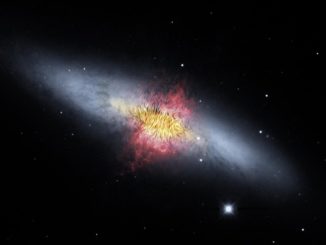The Omega Nebula, also known as the Swan and familiar to legions of amateur astronomers as M17, is one of the most massive star-forming regions in the Milky Way. That it resembles, to some, a swan’s graceful neck is a relatively recent development, the result of regions that formed separately over multiple eras of star birth. Untangling those interactions is difficult. The nebula is more than 5,000 light-years away in Sagittarius, hosting more than 100 of the Milky Way’s most massive young suns. The youngest are shrouded in cocoons of gas and dust, making them challenging targets for even space-based telescopes.
But the Stratospheric Observatory for Infrared Astronomy, or SOFIA, is helping astronomers unravel the history of the nebula. Using its dust-piercing camera FORCAST, SOFIA has found nine protostars where clouds are in the process of collapsing to form new stars. The data also shows how different regions evolved during different epochs of star formation. “This is the most detailed view of the nebula we have ever had at these wavelengths,” said Jim De Buizer, a senior scientist at the SOFIA Science Center. “It’s the first time we can see some of its youngest, massive stars and start to truly understand how it evolved into the iconic nebula we see today.”




